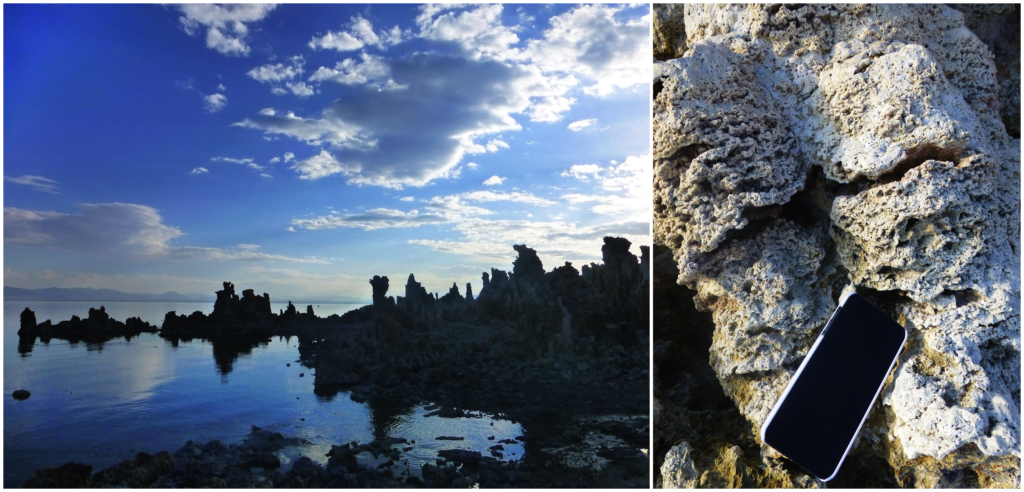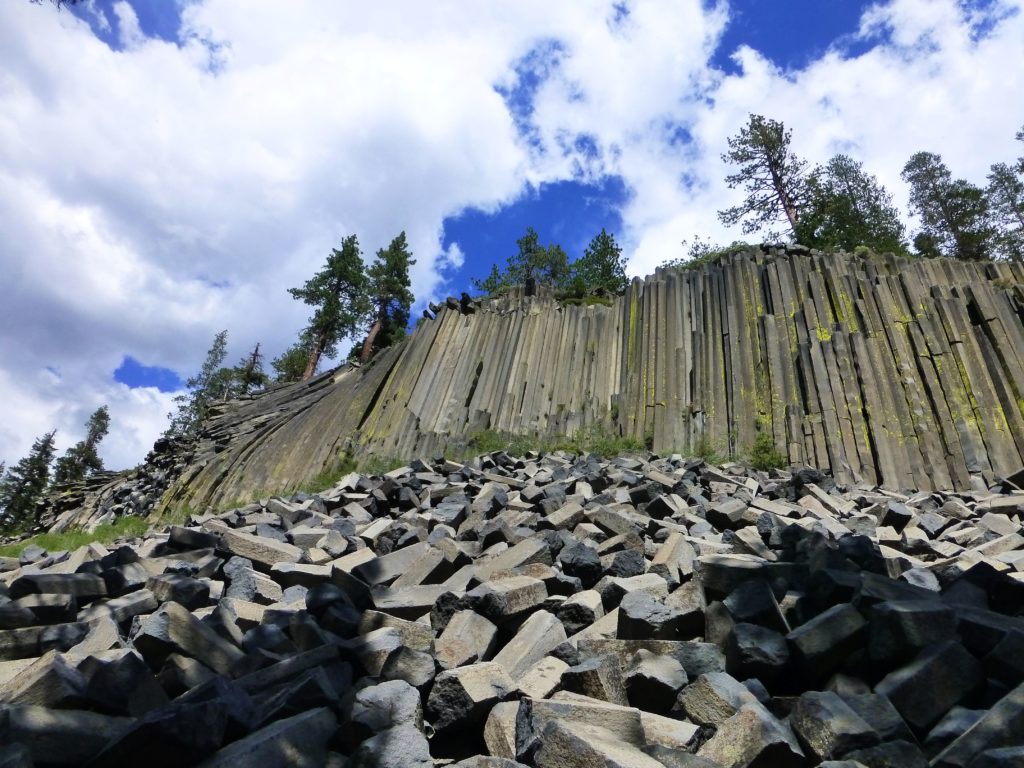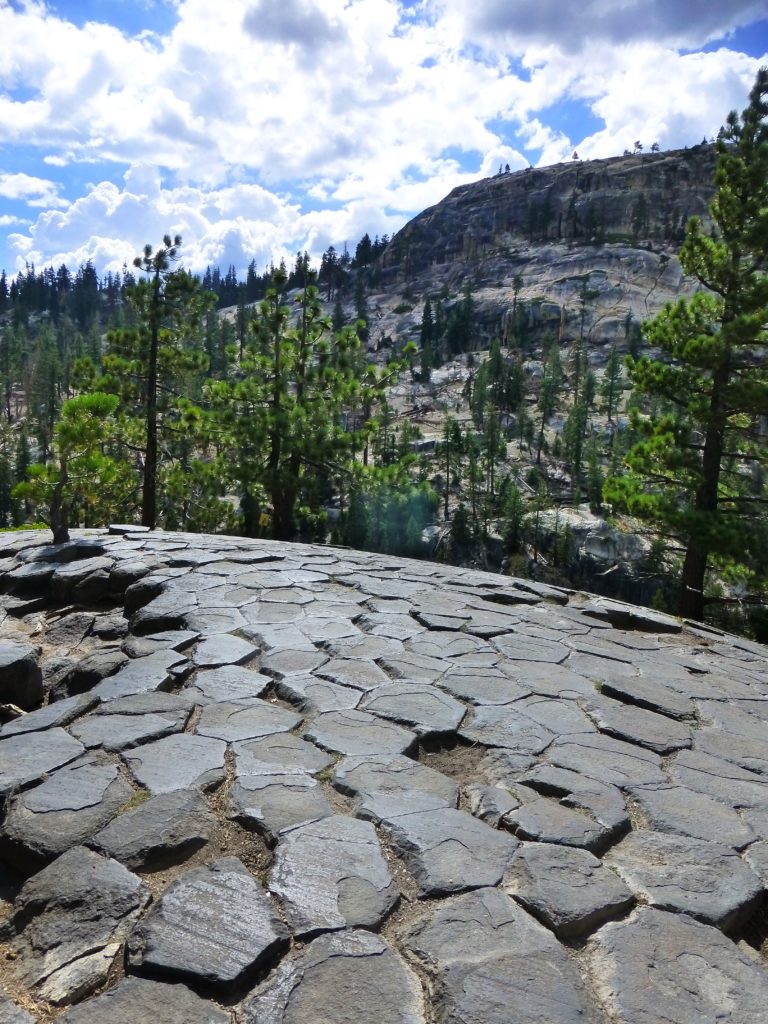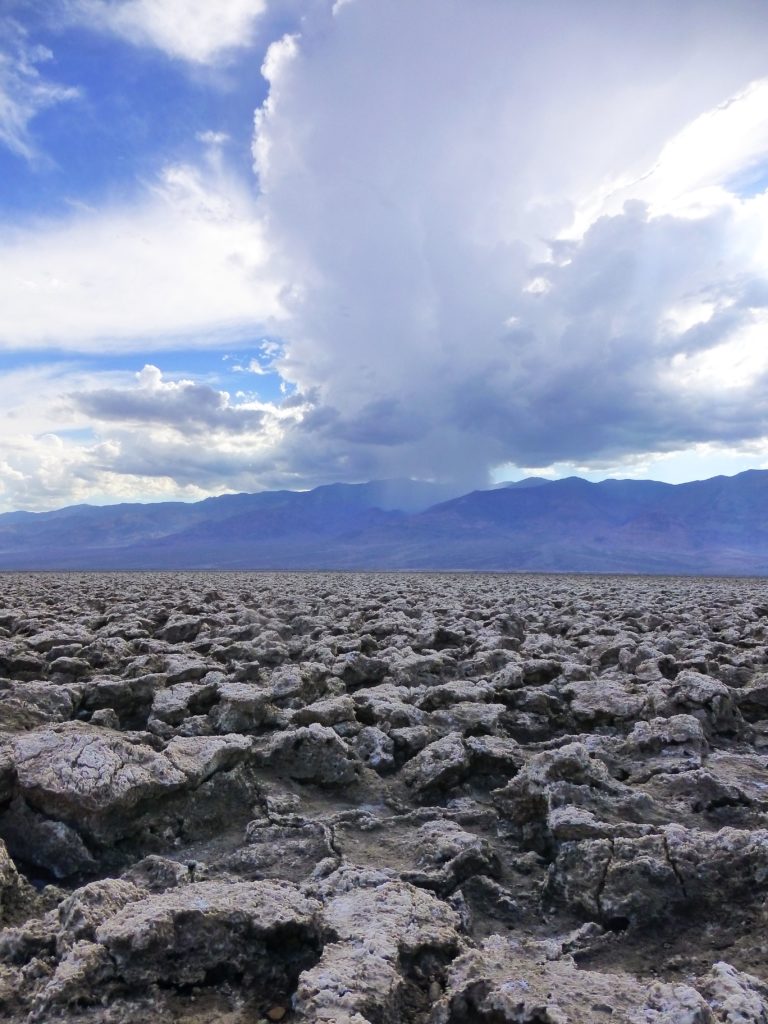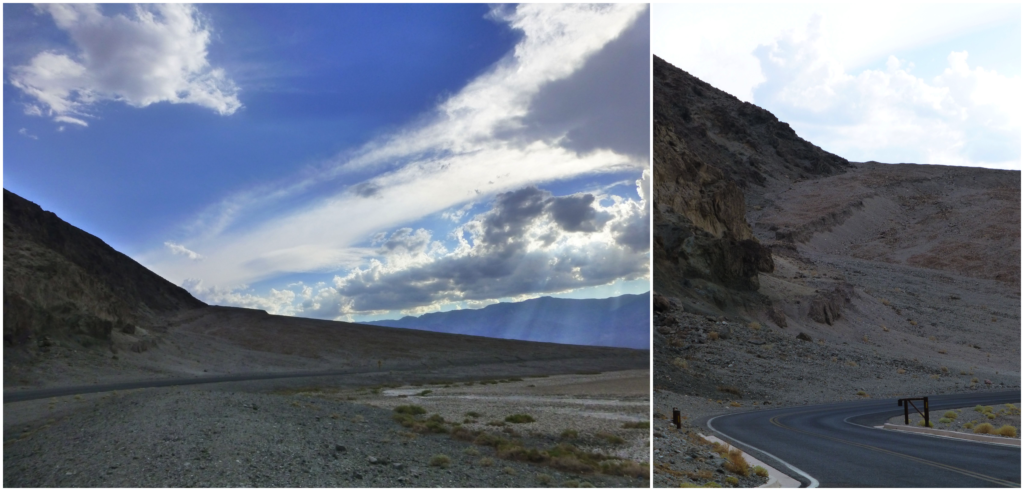This is part 3 of 3. You can read part 1 here and part 2 here.
Probably the best field trip* in the world ever!
(*and it wasn’t even a field trip)
Part 3 of 3: Yosemite to Las Vegas
Two years ago we decided, as a family, to undertake a road trip across south-western America, taking in Las Vegas, Palm Springs, Los Angeles, and San Francisco. Being put in charge of coming up with the itinerary, it was perhaps not surprising that I came up with some geological stops en-route. Our tour traversed parts of the relatively stable Colorado Plateau, the more heavily-deformed “Basin and Range” Province, as well as the tectonic crush zone that is the Californian Pacific Coast. The first two legs of this trip, from Las Vegas to Los Angeles via the Grand Canyon, and then onwards to San Francisco and Yosemite, I have described previously in the first two instalments. This third and last piece covers the section from Yosemite back to Las Vegas via Death Valley.
Crossing the Tioga Pass, which marks the watershed across the Sierra Nevada Mountains, we drove down into a series of rifted basins characterised by extensive volcanic and hydrothermal activity that remains active to the present day. From here, we headed to June Lake, a stunningly beautiful mountain resort that was well off the beaten track in comparison to the crowds at Yosemite we had just left behind.
Close by is Mono Lake, a large highly alkaline body of water with no natural outlet. Mono Lake has numerous travertine pinnacles precipitated by hydrothermally-charged spring waters. It is best visited at sunrise or sunset, where the low light set against the back-drop of pinnacles creates a surreal atmosphere. Mono Lake will be very familiar to fans of Pink Floyd’s album “Wish You Were Here”, as it features on the album cover a man hand-standing in the water mirroring the backdrop of the travertine spires. Mono Lake may also be familiar to petroleum geologists as a possible very small-scale analogue for the formation of hydrothermally-enhanced microbialite carbonate oil and gas reservoirs, such as those of Cretaceous age found offshore Brazil and Angola under the South Atlantic. Adjacent to the lake, a series of small, perfectly-formed rhyolitic tephra craters plugged by obsidian perfectly completes the association of lacustrine, volcanic and hydrothermal processes. Warning – if you are (like I was) wearing on your feet nothing but sandals, you will cut your feet to shreds on the obsidian scree.
South of Mono Lake, volcanic geology becomes increasingly dominant, although paradoxically this isn’t immediately obvious even to the geologically trained eye. The area centres on the so-called “Long Valley Caldera”. OK, this is only about a quarter of the size of Yellowstone, but that’s a pretty huge caldera nevertheless, and it remains very much alive. It is bristling with seismic monitoring stations, as next to an earthquake, a mega-eruption is the next biggest geological catastrophe-in-the-making that makes Californians get twitchy. The potential size of the next eruption is illustrated by thick layers of tuff (reaching over 500ft thickness and covering many hundreds of square miles) that were produced by a single catastrophic event less than a million years ago that blew away much of the pre-existing volcano. Today, however, the volcanic activity manifests itself in bubbling hot springs, fumaroles and ongoing seismic micro-seismicity.
The centrepiece of the Long Valley Caldera is Mammoth Mountain, which is actually a large dormant volcano complete with fumaroles, but is better-known for the ski resort built upon its seasonally-snowy flanks. Also on the flanks of Mammoth Mountain is the “Devil’s Postpile”, a spectacular cliff face composed of hexagonally-jointed basalt that flowed into a valley between Mammoth Mountain and the Sierra Nevada, before cooling in-situ. The valley was subsequently scoured out by glaciers during the last ice age leaving remnants of the columnar basalt preserved along the valley sides. Climbing to the top of the outcrop, one can stand on top of the ice-striated hexagonal columns.
Onwards from here, we drove southwards through Owens Valley, an immense rift located just east of the massive footwall of the Sierra Nevada, topped by Mount Whitney which at 14,505 feet forms the highest mountain in the contiguous USA. The floor of Owens Valley is studded by numerous small lava flows and cones, some of which appear to be very recent in origin. Then, at Lone Pine, (the scene of many early “western” cowboy films), we headed eastwards, back into the “basin and range” province, for what was to be the piece de resistance – the Death Valley National Park.
Death Valley National Park is huge (in fact the largest national park in the USA) and comprises numerous “basin and range” rifts and mountains, of which Death Valley itself is just one small segment. On driving down into the first rift basin, we made a random stop at a viewpoint beside a gorge, which cut through a beautiful sequence of steeply-dipping strata topped by a classic unconformity. It was getting pretty close to geological nirvana by this point!
Onwards to Stovepipe Wells, within Death Valley itself, for a short stop to view the wind-blown sand dunes. And another word of warning – do not, if you are still (as I was) foolishly wearing just sandals on your feet, run out enthusiastically onto the sand, as you will get your feet blistered! The temperature topped 118 degrees Fahrenheit (48 degrees Centigrade) in the shade that day. Yet another word of advice – keep plenty of drinking water in the car and always stay hydrated.
Death Valley was for me the highlight of the trip. Unlike the Grand Canyon, for which (unless you hike down it, and up again), the geology must be viewed from afar, Death Valley offers the chance to get down and dirty with the rocks themselves. A lot of Death Valley is also accessible by car without the need for four-wheel drive, and (compared with the Grand Canyon South Rim) is relatively devoid of tourists, certainly in the extreme heat of high summer. One of the hottest, driest and deepest sub-aerial basins on the planet, It’s difficult to know where to start with the geology. However, the, bouldery alluvial fans around the appropriately-named Furnace Creek, and the salty evaporite pans of the Devil’s Golf Course and Badwater Basin are good places to start. Given the recent rainy weather, parts of the salt flats were actually covered in standing water, and that afternoon, lively thunderstorms rumbled across the nearby Panamint Mountains.
Well worth a visit was the so-called “Artist’s Drive”, where hydrothermal mineralisation had coloured the rocks bizarre shades of blues, greens and yellows. It was also stunning to see apparently recently-formed alluvial fans that had been cross-cut by normal faults. Food for thought for any petroleum geologists working on syn-rift reservoirs deposited within down-faulted hanging-wall settings…
If you are staying in Death Valley, a pre-dawn start to see the sun rise across Death Valley from Zabriske Point and Dante’s View is an appropriate finale to such a fantastic tour. Dante’s view is almost 5000 feet above the bottom of the valley, and at that time of day, the altitude provides a welcome respite from the stifling heat of the valley below. The long shadows at sunrise brings out all the topography of the rift into sharp perspective. Highly recommended!
It was sort of metaphorically (if not geographically) down-hill from there onwards. A long drive back to the casinos and less than alluring glitz of Las Vegas. For the true hard-core geologist, you might still want to make a short diversion just outside Vegas, via Red Rocks Canyon. Here, bright red aeolian sand dunes of Jurassic age are exposed via a series of thrust faults. However – beware! By this point, your family, if they have not already mutinied, will almost certainly do so now. And you may find divorce papers waiting for you when you get home. But with a bit of luck, and some careful planning, everyone will have had a great time!
![]() This work is licensed under a Creative Commons Attribution-NonCommercial-ShareAlike 4.0 International License.
This work is licensed under a Creative Commons Attribution-NonCommercial-ShareAlike 4.0 International License.



